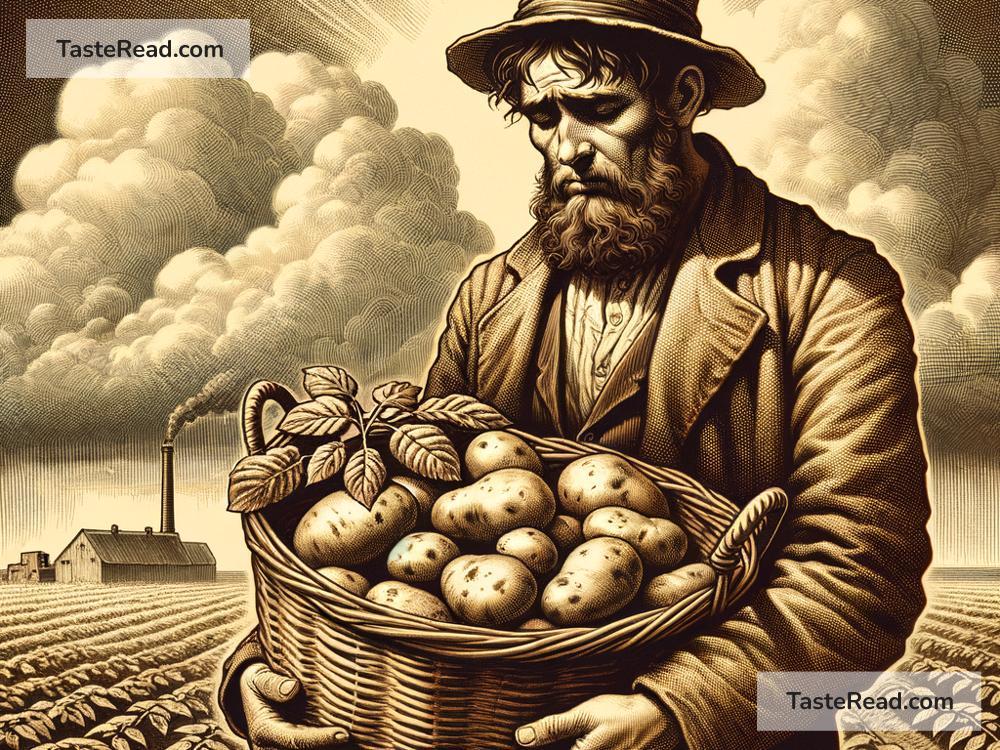How Potatoes Saved Millions from Famine
When we think of potatoes, we probably picture a plate of crispy fries, creamy mashed potatoes, or baked potato with delicious toppings. However, this humble vegetable has played a far more significant role throughout human history. Potatoes were not just a tasty food; they were lifesavers, saving millions of people from famine in times of great hardship. Let’s explore the story of how potatoes became one of the most important crops that helped feed the world.
The Journey of Potatoes Across the World
Potatoes didn’t come from Europe or Asia originally. They were first cultivated by the Indigenous peoples of South America more than 7,000 years ago, mainly in the Andes Mountains of modern-day Peru and Bolivia. They were perfect for harsh climates since they could grow in simple soil, withstood cold conditions, and provided a reliable source of nutrition.
In the 1500s, European explorers brought potatoes back to Europe, introducing them to new regions. While Europeans were initially hesitant to eat potatoes because they looked strange and foreign, farmers soon realized how valuable these tubers were. They grew quickly, protected people from starvation, and became a staple part of diets across the continent.
A Superfood for Hard Times
One of the reasons potatoes are so special is their nutritional value. They are packed with energy-rich carbohydrates, Vitamin C, potassium, and other important nutrients. Potatoes are easy to grow, even in poor soil, and they produce a higher yield than wheat, corn, or other common crops. One acre of land can produce enough potatoes to feed a family for an entire year, which is why they became a lifeline in areas facing hunger.
For countries where food shortages were a constant threat, potatoes were a miracle crop. During the 18th century, France and other parts of Europe struggled to grow enough food to feed growing populations. Famines were not unusual, and outbreaks of wars or bad weather often meant people went hungry. Potatoes changed this situation, as they gave even the poorest families access to nutritious food.
One famous story during this time involves Antoine-Augustin Parmentier, a French agronomist who promoted potatoes as a solution to famine in France. He convinced farmers to grow potatoes and even tricked people into eating them by planting potato fields and putting guards around them, making the crop seem valuable. Curious individuals would steal the potatoes, spread the word about their taste, and eventually embrace them as an important food source.
Potatoes and Ireland’s Population Boom
In Ireland, potatoes had a particularly profound impact on the population. By the 17th century, potatoes became the primary food for many Irish families because they were easy to grow and could feed large families on small plots of land. Nearly everyone in Ireland ate potatoes daily, often in large quantities, and this led to a dramatic population growth. Between the 1650s and early 1800s, Ireland’s population grew from fewer than 2 million to more than 8 million!
However, this dependency on potatoes also brought danger. In 1845, a disease called potato blight destroyed Ireland’s potato crop, leading to the infamous Irish Potato Famine. Millions of people faced starvation, and over 1 million died, while another million emigrated to escape the harsh conditions. The famine showed that depending on one crop as a food source was risky, but it also proved how critical potatoes were in feeding the population.
A Global Lifeline
As the world grew larger and more connected, potatoes became a key crop to prevent famine in many other countries. During the 19th and 20th centuries, potatoes were introduced to India, China, and Africa, where they quickly gained popularity. People in these regions initially used potatoes during times of crisis, but they later became everyday foods that supported growing populations.
For example, in China, potatoes helped feed millions after food shortages and political instability. Today, China is the world’s largest producer of potatoes, thanks in part to the crop’s ability to grow in high-altitude and difficult areas. In other countries like Russia, potatoes didn’t just prevent famine — they became such a beloved food that they grew to symbolize national pride.
The Legacy of Potatoes
Even today, potatoes remain one of the most widely grown and eaten crops worldwide. Over 1 billion people depend on potatoes as a significant part of their diet, and they play a key role in fighting hunger and malnutrition in many areas. From French fries to traditional dishes like Indian aloo curry or Peruvian papa a la huancaína, potatoes are enjoyed across cultures and countries.
So the next time you sit down to enjoy a bowl of potato chips or a baked potato, take a moment to reflect. This simple vegetable has done more than just satisfy our taste buds. It has saved lives, supported populations, and shaped the history of nations. Potatoes truly are one of the world’s most remarkable crops — a symbol of resilience and sustenance during humanity’s most challenging times.
Who knew such a humble tuber could have such an incredible story?


